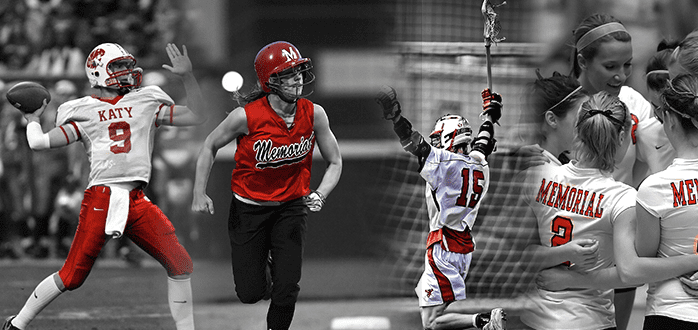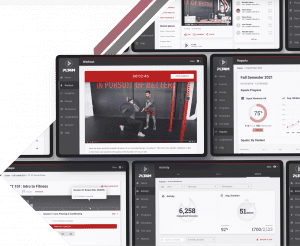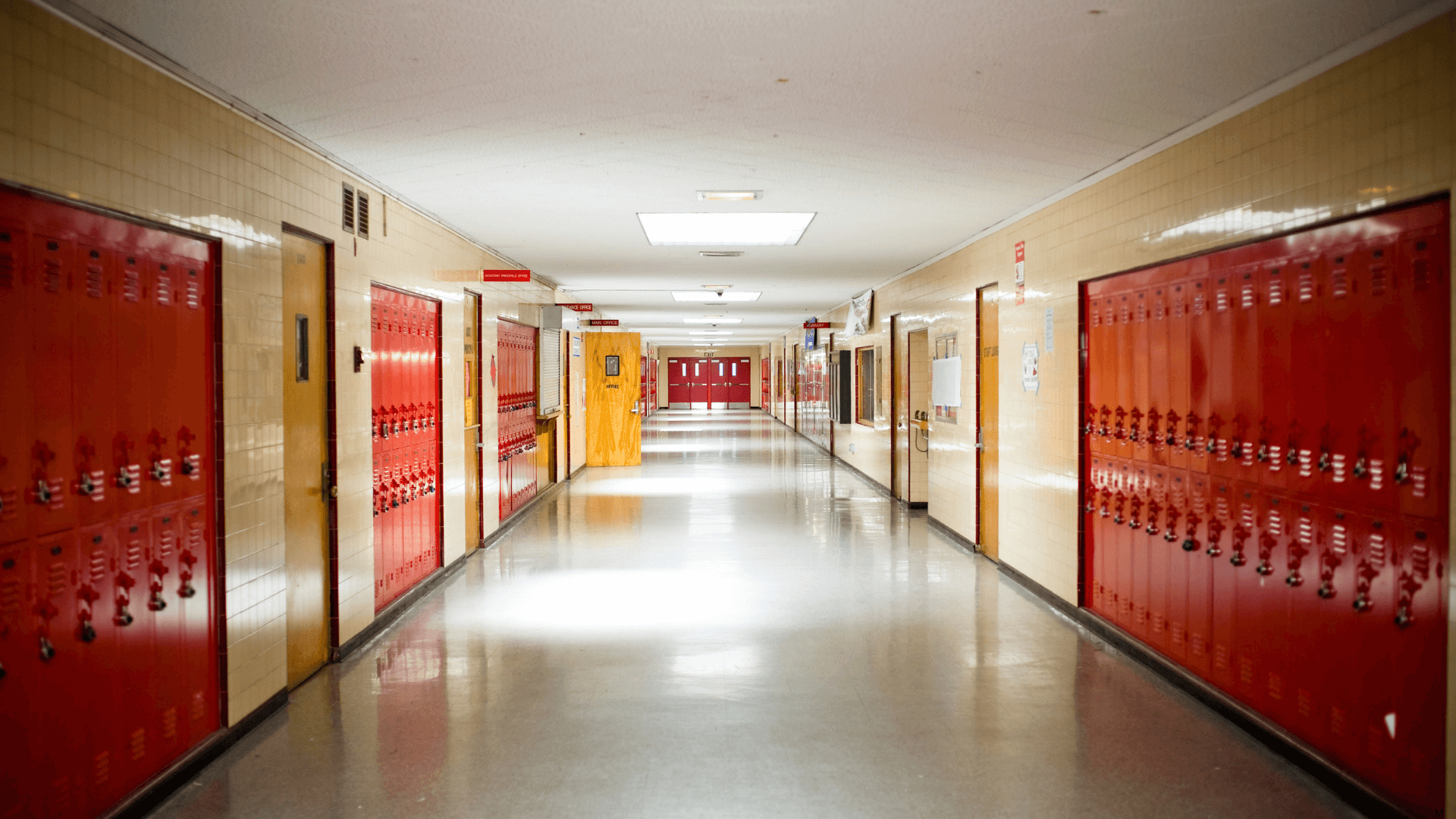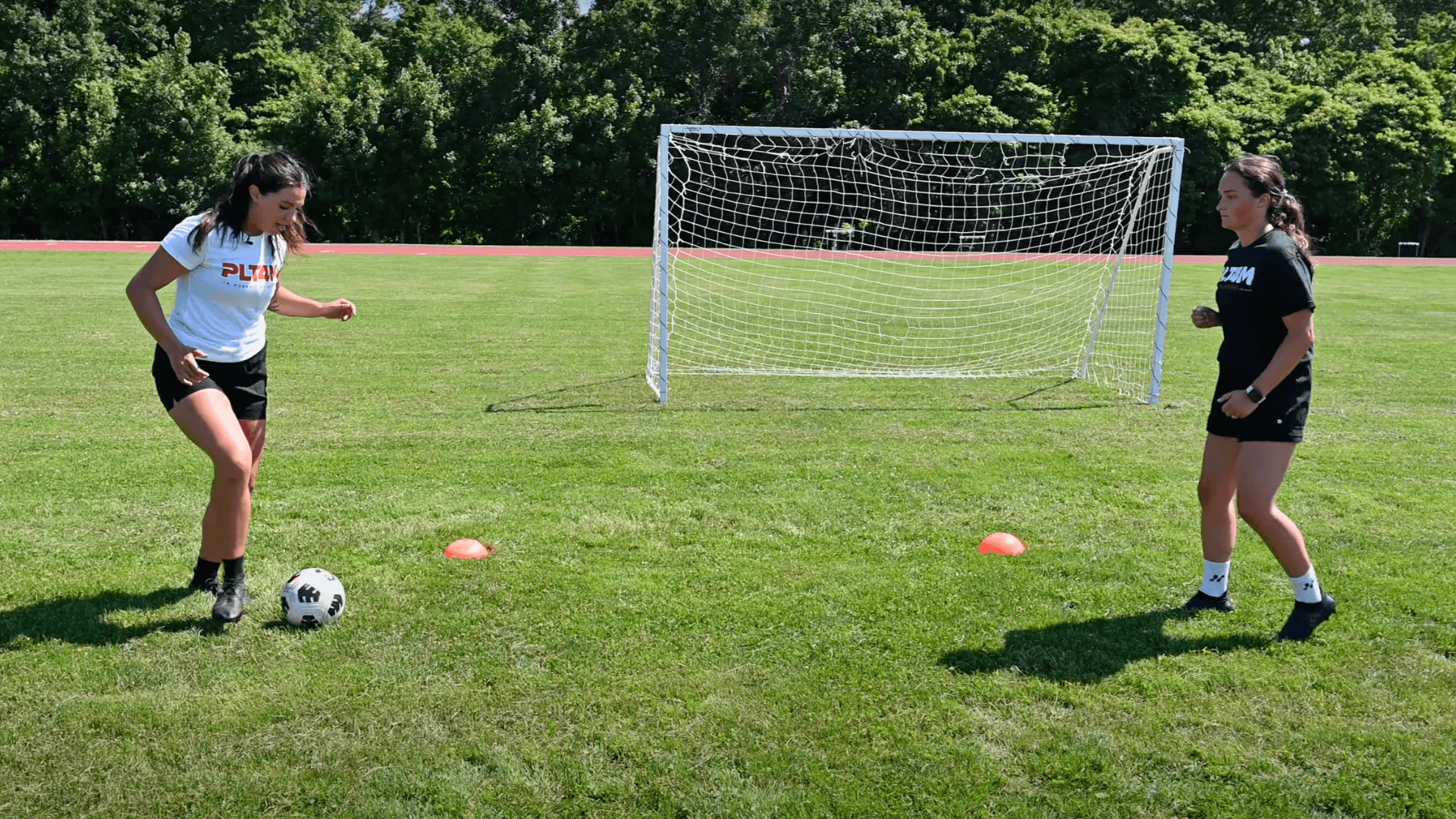The debate surrounding sport specific training has persisted for decades. And the battle still rages on today. For a long time, it was thought that training had to be specific to sport and position. But then the rise of unified training and athletic performance took charge in recent years.
And while strong opinions exist on both sides of the conversation, we don’t need to be black and white. Instead, let’s unpack what athletes and coaches WANT, and the best means of accomplishing it given the context of middle and high school sports. In short, we all want to improve athletic performance, so how can we go about that in an age of rising sport specificity and increased competition.
The Rise in Sport Specificity
The rise in sport specificity for athletes at younger ages has gotten a lot of attention over the last few years. Youth athletes want to become elite athletes, and see club and travel programs as the best opportunity for success. And while some level of sport specificity can be a good thing for development, research shows the negative impacts early specialization can bring. As one study in Sports Health Journal stated,
“For most sports, there is no evidence that intense training and specialization before puberty are necessary to achieve elite status. Risks of early sports specialization include higher rates of injury, increased psychological stress, and quitting sports at a young age.”
Although research raises cause for concern around sport specificity in youth athletes, it can be hard to combat other outside factors. Money, social media, and competition have all led parents and young athletes to see sport specificity as their only option for success. It has ballooned into a massive industry for athletes at younger and younger ages.
As a result, sport specificity has also impacted the desire for more sport specific training.
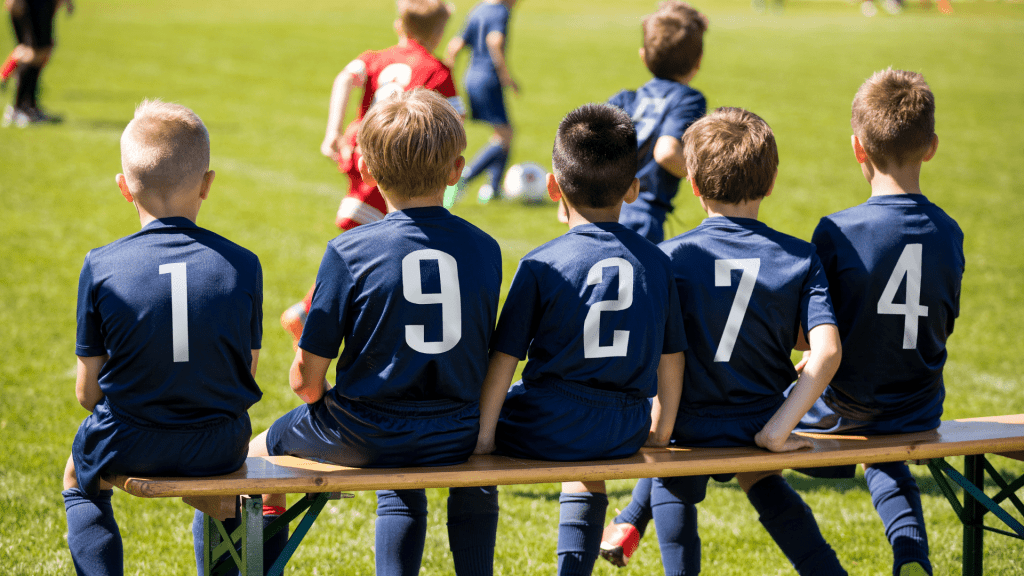
The Rise in Sport Specific Training
Not only has sport specificity been on the rise, but so has sport specific training. Some of the major factors driving this movement are:
- Competition
- Money
- Social Media
- Lack of Education
Competition: What drives athletes at almost any age is the desire to be the best. Many assume that it requires them to do something different or unique to achieve greatness. Because this is the biggest driving factor, other things like money, social media, and lack of education can drastically influence the decision making process for training.
Money: Like sport specificity, there is a huge industry for athletic performance training. Trainers and companies looking to make money need to differentiate themselves from other options and use sport specific training as a means for success. By labeling and advertising something as a sport-specific training program, many coaches and companies believe they can gain the competitive edge.
Social Media: We all know the power of social media, and see the impact it has on sport performance conversations. High level athletes post small snippets of workouts that are deemed “sport specific training”, and lead many young athletes to think they need to do the same in their training to be an elite athlete. We all want to be like Patrick Mahomes, but do we need to train exactly like him?
Lack of Education: Most people, especially parents of athletes, think classic weight training is equated to bodybuilding. People assume a “typical” weight training session is for vanity and muscle growth, not sports performance. Therefore, when they see sport specific training as an alternative option, they will invest because of its potential opportunity for improved sports performance.
And while it might be tempting to laugh away arguments and misconceptions around sport specific training, we would be better served to educate and understand some of the key concepts around performance training.
Not everyone is sold on sport specific training!
Sport specific doesn’t exist in the weight room! Even if you throw on catchers gear and squat in it! pic.twitter.com/eXPlrQBKrD
— Trevor Gutting (@TrevorGutting) November 2, 2022
basketball specific training on the left
— rachel hayes (@rachelkh2) August 23, 2021
softball specific training on the right
same day, same hill pic.twitter.com/12hhZQoRCs
The Underlying Assumptions of Sport Specific Training
Probably the most important delineation to make when talking about sport specific training is the difference between mimicry and specificity. These two words are not synonymous with each other.
When athletes want to improve specific on-field tasks, they believe these movement patterns need to be replicated, exactly, in a strength training program. For example, because basketball requires a lot of jumping, athletes want to jump and do endless plyometric training. Although this might appear to make sense at a high level, it fails to address all the different elements of what improves jumping past just the mimicry of the movement throughout a training session. (More on that later.)
While many sport specific training programs emphasize mimicry, others look to avoid certain movements entirely. For example, we have often heard the claim, “Overhead athletes should not go overhead.” By completely removing certain muscle groups and movements patterns in the weight room, though, we then encounter the negative effect of under-developing the entire physical makeup of an athlete.
Both over-emphasizing and avoiding movement patterns, we fail to support an athlete’s total development. Let’s take a look at how we can approach a training session to support the demands of sport.
Bonus Content! Check out our video podcast breaking down sport specific training.
The Total Athlete – Demand Specific vs. Sport Specific Training
In order to decide how to train for performance, let’s first take a step back and look at the bigger picture. Instead of thinking “sport-specific”, we should really be thinking demand-specific. Below the level of superficial movement and skill, we see that sports are driven by a handful of key physiological concepts:
- Strength – The ability to generate force and act upon the world.
- Speed – The ability to execute movement with velocity.
- Power – The effective combination of strength and speed, or increasing the rate of force development.
- Control – Mobility, coordination, and stability.
- Capacity – Resilience to injury, both through the addition of body armor (think mass and volume) and targeted conditioning (think being able to perform under fatigue / delay fatigue).
Using these key concepts, we can start to debunk the desire for sport specific training. There are very few situations in which each of the above concepts are not beneficial to ANY athlete. Training for improvement in all of the above is to be specific to “sport” as a whole.
Free Download!
The Ultimate Guide to High School S&C
Learn how to navigate the many logistical challenges that face high school coaches, and get insights into how to program effective workouts.
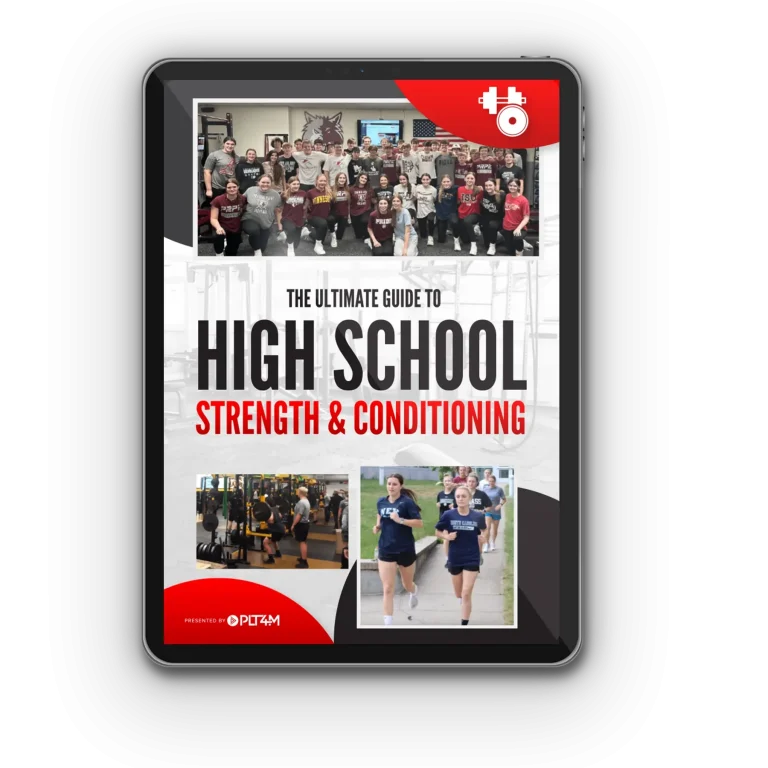
The Basketball Example
Let’s take a look back at the example of Basketball.
While many might see a basketball game and think “jumping” as both and end goal and the method for improvement, it needs a much deeper analysis than that.
Basketball requires much more than the physical ability to jump.
Athletes should be able to stop & start (create and “absorb” force), move quickly, operate with complete control, and resist injury during physical contact and the fatiguing aspects of a game. A stronger, faster, more stable and mobile athlete, with the ability to withstand the physical demands of the game will inevitably be better than someone who can jump higher.
Jumping, itself, requires more than just the skill development of the movement itself. A vertical leap, for example, is best improved by increasing the strength of athlete (generating more force into the ground with the legs, for example), the rate of force development (executing the movement with velocity), the ability to both withstand the force of landing and land with proper control and positioning – at any point during the game.
A good vertical jump, then, comes from basic strength & power training, plyometric training, core training, mobility work, conditioning, etc.
By better understanding the core physiological components of sport performance, we can then think about how to best go about athletic development. It is all about pursuing the underlying adaptations that lend an advantage in executing the demands of any sport.
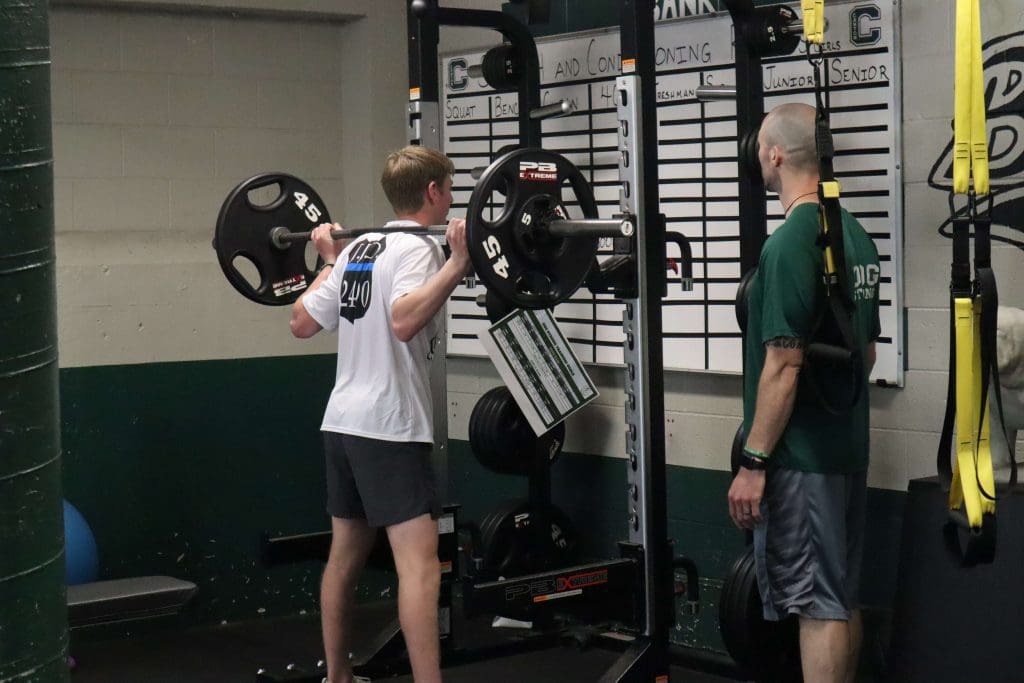
Training For Sport vs Sport Specific Training
The majority of training in the weight room is not sport specific. For example, a barbell back squat can develop muscular strength that is beneficial to all sports. Notice, we don’t call it a “football back squat” or “basketball back squat.” If we don’t do this for specific movements, we don’t need to do it for specific workouts. Let’s call it in season strength training!
Where training for sport will have real specificity is at practice.
Of course there is a need to develop skills that can only be practiced within the given sport. Such, though, does not need overlap directly with training in the weight room. Sports practice is where a basketball athlete can work on jumping for a rebound and a football athlete can work on jumping for a 50/50 ball. But because they are taking part in a comprehensive strength and conditioning program, they will have all the requisite pieces to fulfill the demands of their sport.
In addition, one thing that will require some specificity is the conditioning for your sport. Sure, a cross country runner and baseball athlete will likely need different conditioning routines. While capacity and conditioning can take place in a training session, this again can be something focused on at sports practice.
But My Athletes and Coaches Still Want Sports Specific Training!
We don’t expect every athlete and coach to go through a systematic review of general training vs sport specific training. So what happens when you have athletes and coaches who are still looking for sport-specific training sessions?
Don’t fight, educate. One of the best ways to convince someone is by connecting the dots. Ask your coaches and athletes to visualize the wide array of demands their sport brings. From there, draw connections to the training sessions and how they can help to improve the full picture. In a given workout, you can identify and label different exercises and how they are helping to build strength, speed, power, control, and capacity…and how that will translate to the field of competition.
If that still doesn’t do it, meet them somewhere in the middle. You may simply carve out 10 minutes at the end of a training session to allow for people to do what they want. While this might feel like a concession, you are still accomplishing your goals and not fighting a losing battle with an athlete or coach.
Or even easier, put the name of their sport on the top of the workout. It might still be the same as other sports, but just feeling some ownership of that given workout can be more empowering than we think. All of a sudden, an off season workout that is labeled football off season workout might generate more buy in.
Ready to Learn More?
Schedule a free 10 minute consultation to see how the PLT4M system can help save you time, and empower student learning!
Key Takeaways on Sport Specific Training For Middle and High School Athletes
At the end of the day, we are still talking about middle and high school athletes. While sport specificity is on the rise, many of these athletes play multiple sports. This alone should highlight the need to focus on total athletic development, not hyper focusing on what we perceive to be best for one sport.
We are all in this together! As an athletic department, we are best served to not compete with each other, but rather work as a cohesive, unified unit. This means rather than fighting for sport-specific strength training, understand that a unified approach will allow every athlete to succeed regardless if they play one or multiple sports.
And while we all have dreams of our youth athletes becoming the next Kobe, Brady, or Hamm, most of us will not. At the end of the day we are talking about kids who will benefit from a comprehensive training program for lifelong fitness. Better yet, we are not doing students a disservice by taking a unified and holistic approach, they will still see improved performance from a well-rounded strength and conditioning program.
